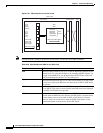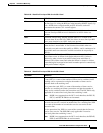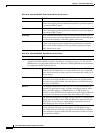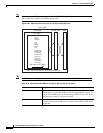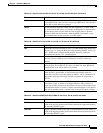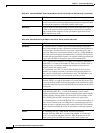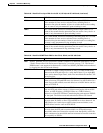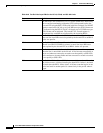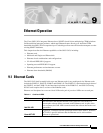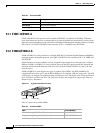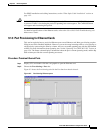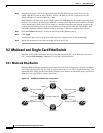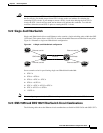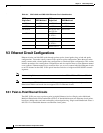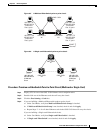
8-42
Cisco ONS 15454 Installation and Operations Guide
November 2001
Chapter 8 Performance Monitoring
Performance Monitoring for Optical Cards
Table 8-40 Far-End Line Layer PMs for the OC-12, OC-48, and OC-192 Cards
Parameter Definition
CV-L
Far-End Line Code Violation (CV-L) is a count of BIP errors detected by
the far-end line terminating equipment (LTE) and reported back to the
near-end LTE using the REI-L indication in the line overhead. For SONET
signals at rates below OC-48, up to 8 x N BIP errors per STS-N frame can
be indicated using the REI-L. For OC-48 signals, up to 255 BIP errors per
STS-N frame can be indicated. The current CV-L second register is
incremented for each BIP error indicated by the incoming REI-L.
ES-L
Far-End Line Errored Seconds (ES-L) is a count of the seconds when at
least one line-layer BIP error was reported by the far-end LTE or an RDI-L
defect was present.
SES-L
Far-End Line Severely Errored Seconds (SES-L) is a count of the seconds
when K (see GR-253-CORE for values) or more line-layer BIP errors
were reported by the far-end LTE or an RDI-L defect was present.
UAS-L
Far-End Line Unavailable Seconds (UAS-L) is a count of the seconds
when the line is unavailable at the far end. A line becomes unavailable at
the far end when ten consecutive seconds occur that qualify as SES-LFEs,
and it continues to be unavailable until ten consecutive seconds occur that
do not qualify as SES-LFEs.
FC-L
Far-End Line Failure Count (FC-L) is a count of the number of far-end
line failure events. A failure event begins when RFI-L failure is declared
and ends when the RFI-L failure clears. A failure event that begins in one
period and ends in another period is counted only in the period where it
began.



